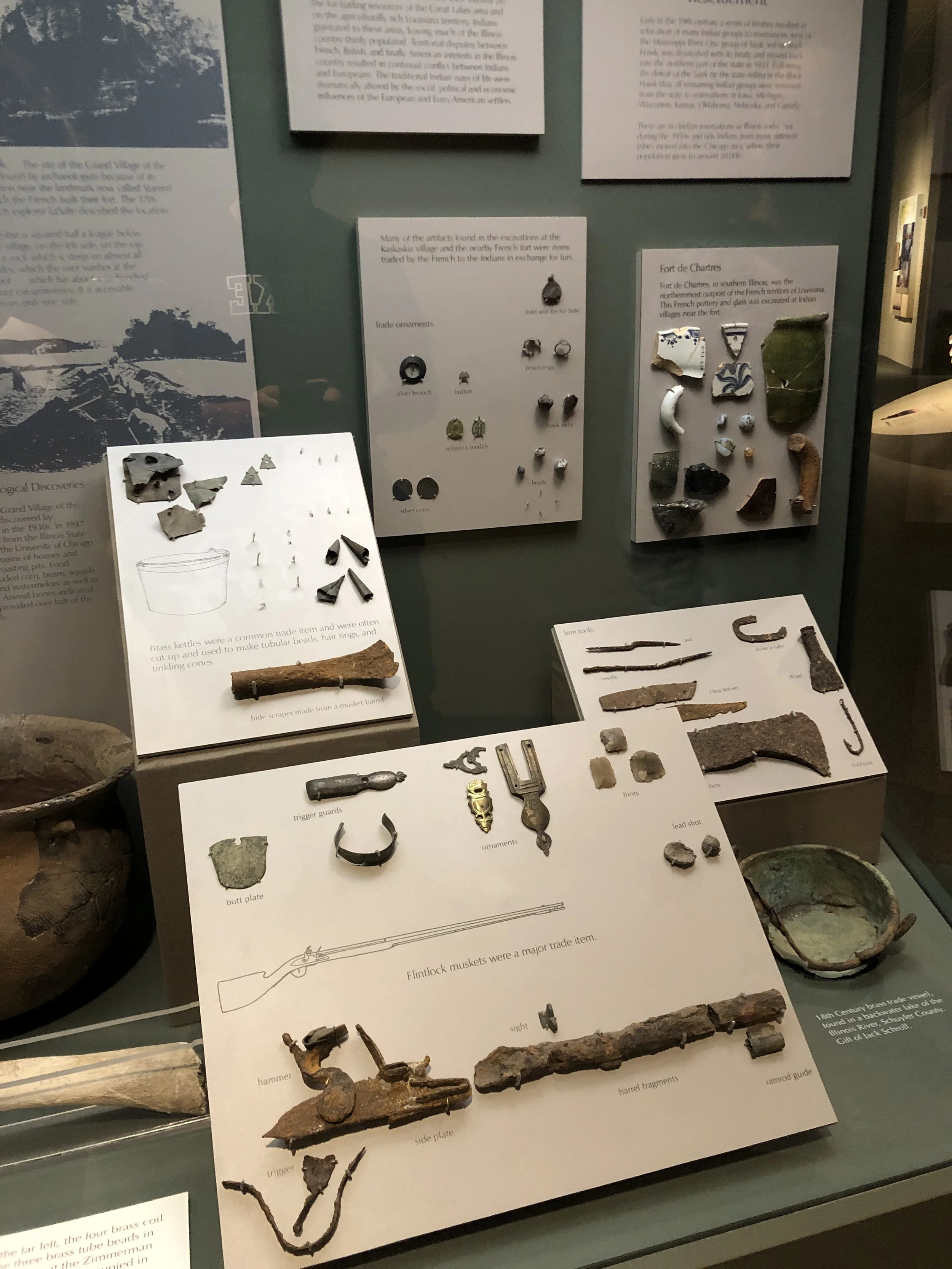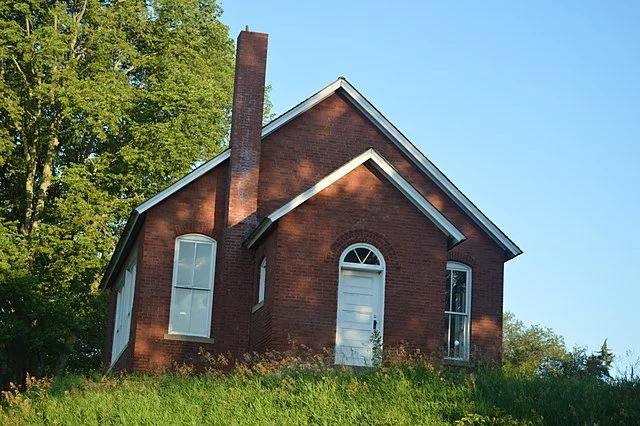Twelve Thousand Years on the Spoon
Spoon & Illinois River Overlook from Dickson Mounds Museum
Josiah Chatterton - The Forgottonia Times™
If you stand on the bluff just east of Lewistown, where the Spoon River gives way to the Illinois, you can look out across a valley that has carried people, goods, and stories for 12,000 years. That's the setting of Dickson Mounds — one of the most important archaeological sites in the Midwest, and one with a story that starts not with a university, but with a Fulton County chiropractor and his shovel.
Back in 1927, Don Dickson was tending ground on his family farm when he uncovered ancient graves. Instead of digging them out and boxing up the bones, he decided to leave everything in place — burials, artifacts, and all. He stretched a tent over the site, and before long, word spread. Thousands came that first year to see what he had found. They came by car and by curiosity, paying a small fee to step inside and look at a past that had been sleeping under their feet.
Ogden-Fettie Mound Group - Photo courtesy of Matt Hucke
In time, Dickson built a small building around his discovery and kept showing it to anyone who wanted to see. He called it a museum, and in a way, it was. His "open-burial" display became famous, not just here but across the country. It was part science, part spectacle — the kind of thing roadside travelers in the 1930s could hardly pass up.
After World War II, the State of Illinois bought the site. Dickson stayed on as caretaker and guide, still welcoming visitors. In 1965, the land and collection became part of the Illinois State Museum system, and in 1972, a modern concrete-and-glass museum opened on the hilltop. By then, it was clear the story of the valley was far bigger than one dig.
Archaeologists working around the Illinois and Spoon rivers had already traced human life here back more than twelve millennia. At the end of the Ice Age, small bands of hunter-gatherers followed the river's bends, fishing and foraging. Over time, their descendants began to farm, raise families, and build communities. Around 800 CE, the Mississippian culture took root — the same civilization that built Cahokia — and the valley filled with towns, gardens, and mounds. What we call Dickson Mounds was one of their cemeteries.
For decades, the burials he uncovered were left on view — first in his own display, then inside the state museum. But by the late 20th century, attitudes had changed. Native leaders and their allies objected to the public exhibition of human remains, and after much debate, the State of Illinois closed the burial display on April 3, 1992. The museum was remodeled the next year and reopened in 1994 with a new mission: to tell the full 12,000-year story of the Illinois River Valley without putting the dead on display.
Today, Dickson Mounds is a branch of the Illinois State Museum, and it's still perched on that same bluff. Inside, the River Valley Gallery traces the land and the people together — the floodplains, the forests, the towns, and the trade routes that made this one of the richest cultural regions in North America. Another exhibit, Reflections on Three Worlds, invites visitors to step into Mississippian life through stories, replicas, and sound — a respectful look at belief, community, and craft.
East Waterford School, located on the western side of Dickson Mounds Road
And if you walk the grounds, it's easy to see why this spot has always drawn people. The rivers glint in the distance. The air is thick with birdsong. In the bottomlands below lies the Emiquon Preserve, a restored wetland that, in its way, carries on the same cycle of use and renewal that has shaped the valley for thousands of years.
There's still some local legend in the tale — a country doctor who dug into history, the tourists who came to see, the state that stepped in, and the tribes whose voices finally changed the story's course. It's all part of the patchwork that makes the Spoon River Valley what it is: a place where the ground remembers, and where every shovel of dirt can open another chapter of Illinois' past.
If you haven't been lately, it's worth the drive out toward Lewistown. Go for the view, the quiet, and the reminder that this corner of Forgottonia has been home to people longer than we can truly grasp — long before we called it Illinois, or Fulton County, or Home.
Museum at Dickson Mounds - Photo courtesy of Matt Hucke





